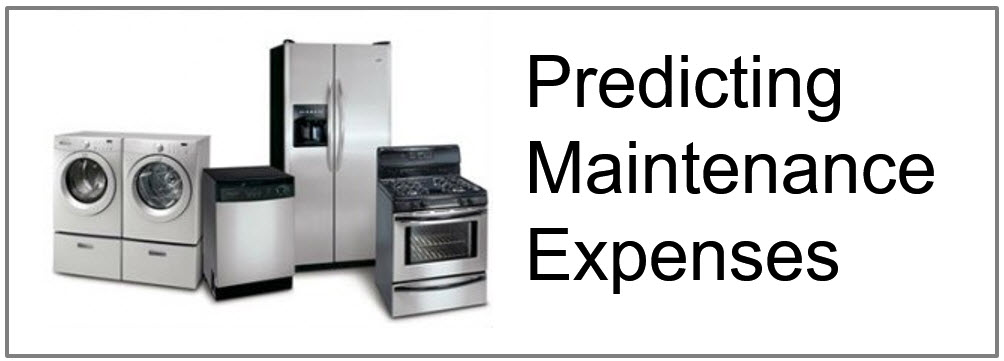Is it too much work to keep track of the age of the major appliances in each of your properties? How about keeping a log of all service performed on each appliance?
If you don’t see the value in doing so, let’s look at these two approaches for reserving some budget for appliance maintenance:
Budgeting Approach #1:
You are creating a budget for one of your properties, and you set aside $2,000 for repairs and maintenance because that’s what you budgeted last year.
Budgeting Approach #2:
For this specific property, you know that the water heater is 10 years old, the furnace is 5 years old, and the fridge is 8 years old. You also know that annual maintenance has been performed on the furnace, and you also have reason to believe that the furnace filter gets changed by the tenant a few times a year. You’ve looked at when maintenance was performed on the water heater and the fridge. Based on this data, you estimate the probability of spending money on repairs for the water heater, furnace and fridge.
Budgeting Table for Property at 123 Elm Street:
| Appliance | Age | Normal Life | Replacement Cost | Probability | Expected Cost |
| Fridge | 8 yrs | 10 yrs | $1,800 | 50% | $900 |
| Furnace | 8 yrs | 15 yrs | $3,500 | 10% | $350 |
| Water Heater | 5 yrs | 10 yrs | $800 | 10% | $80 |
Approach #1 vs #2:
Averages are convenient, but if you treat your properties as the average of the portfolio, you will lose on some and profit on others. Using Approach #1, you will not have the flexibility to determine margins on each individual deal opportunity.
Approach # 2 requires more record keeping. But if you have the data, you can more confidently customize your price and terms for each property.
For a large property portfolio, such appliance maintenance information can be fed into a predictive analytics model. These models will enable you to more accurately forecast your maintenance expenses and give you the huge advantage in negotiations and marketing your property.


